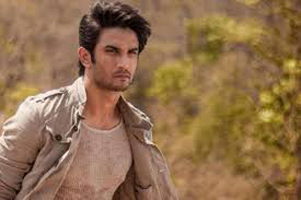NE LEGAL BUREAU
MUMBAI, OCT 21
The Bombay High Court on Wednesday demanded to know from the Republic TV if asking viewers who should be arrested in a case in which a probe is going on, and infringing upon a person’s rights qualified as “investigative journalism”.
A bench of Chief Justice Dipankar Datta and Justice G S Kulkarni was referring to a hashtag campaign, and several news reports related to the death of actor Sushant Singh Rajput that the channel broadcast.
The court pointed to the channel’s #ArrestRhea hashtag campaign on Twitter.
It also asked the channel’s lawyer Malvika Trivedi why Republic TV broadcast photos of the dead body, and speculated on whether the actor’s death was a case of suicide or homicide.
“The grievance is regarding #arrestrhea. Why is this part of your channel news?” the bench said.
“When a case is under investigation and the issue is whether its a homicide or a suicide and a channel is saying it is murder, is all this investigative journalism?” it asked.
The observations came while the bench was hearing the final arguments on a bunch of public interest litigations, seeking that the press is restrained in its reportage on the death of actor Sushant Singh Rajput.
The pleas had also sought that TV news channels be stopped from conducting a media trial into the case.
The bench had asked all parties to clarify if a statutory mechanism was required to regulate the content broadcast by the TV news channels.
Earlier this week, it had also asked the Union government why guidelines of private bodies such as the News Broadcasters Standards Authority (NBSA) to regulate the content broadcast by TV news channels could not be ratified and enforced by the government.
During the day-long hearing, Additional Solicitor General Anil Singh, who appeared for the government, said that the Centre was in favour of a self-regulatory mechanism for the print and TV media.
Singh also said that the Union government forwarded the complaints it received against TV channels, to the NBSA if those channels were its members.
Else, it initiated action against them while ensuring that the freedoms of the press were not breached.
“It is not that we are not taking action against erring channels and it”s not like the mechanism is not working,” Singh said.
“Maybe one or two channels may not have followed the guidelines properly, but by and large all channels have been following them regularly,” the ASG said.
Singh said that if the action by the NBSAwas inadequate, then the union initiated action against erring channels.
“Action has been taken by the Ministry against 214 channels since 2013 for violations under the Programme Code Court,” he said.
The lawyers for several TV channels that are a party in the case, all submitted that the NBSA”s code of ethics and guidelines on reportage, and the authority’s powers to demand am apology and a maximum fine of rupees one lakh on erring member channels were an adequate self- regulatory mechanism.
Republic TV meanwhile, responding to the court’s queries said that its reportage on Rajput’s death and the subsequent probe helped “unearth” several important elements in the case.
“Journalists have a right to bring public opinion on the forefront and criticise the government. Everyone doesn’t need to appreciate what is being projected by news channels. However, if a piece of news makes a certain section uncomfortable it is the essence of a democracy,” advocate Trivedi, Republic TV’s counsel said.
The court, however, said that it wasn’t asking for the media’s throat to he throttled, but that the press must recognise its boundaries.
“We are referring to the basic journalism norms, where a basic etiquette has to be maintained for suicide reporting. No sensational headlines, no constant repeating. You did not even leave the deceased…forget the witnesses,” the bench said.
“You have depicted a lady in such a way that infringes on her rights. This is our prima facie view,” it said.
The HC will continue the hearing on Friday.












